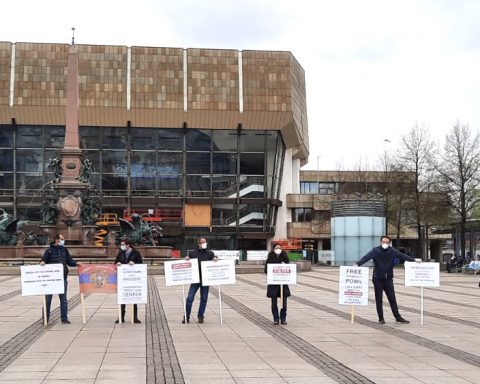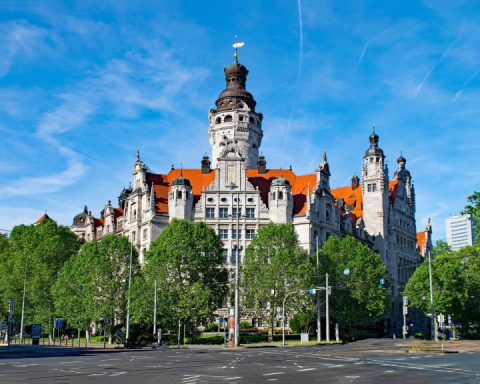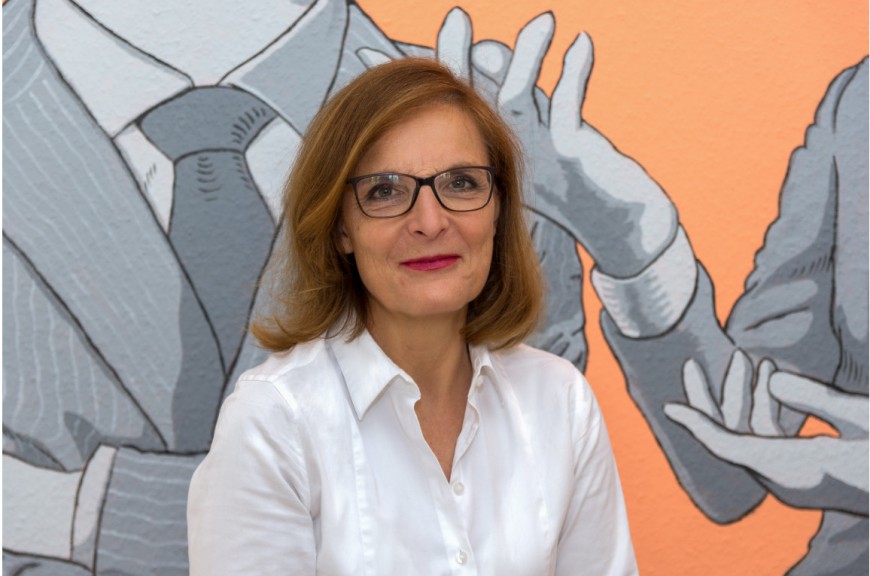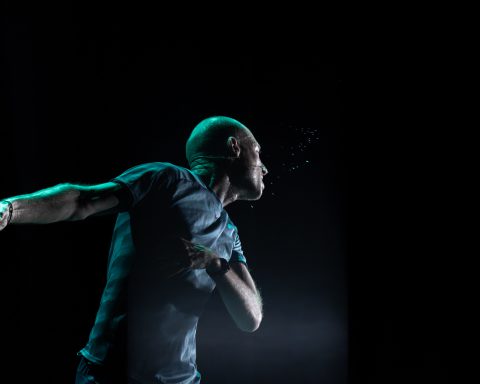Hallo tomorrow
The Democratic Republic of Congo (DRC) has a new president, and there are arguments that he is just a different face and the old president still holds power. Time will tell.
The fact remains that Joseph Kabila has been peacefully replaced by Félix Tshisekedi, something that some African countries like Uganda and Cameroon can only dare to dream of.

DRC is famous for its vast mineral reserves and Africa’s most biologically diverse protected area. Although there is not much to celebrate on the politico-economic front, there is enough media coverage on this already. I believe that it is helpful, arguably healthy, to always look on the bright side of life.
In other words: There is more to DRC than the poverty and war rhetoric that is dominant in ‘the West.’ And Leipzig offers us a beautiful lens into the land that gave us Lumumba.
The Grassi Museum currently has the exhibition Megalopolis – Stimmen aus Kinshasa.
Kinshasa is the capital of DRC, and the exhibit was put together by artists from Congo during their residency at the Leipzig museum. It is therefore accompanied by the clear statement that the exhibition is not shown from the point of view of a European ethnologist. That’s a very important caveat in the contemporary art scene, thanks to the ongoing debate on rights, ownership and perspectives on art pieces.
The bias within
I am in academia, where debates on knowledge production and reproduction are rife. What happens is that most “western” researchers are not genuinely keen on getting African perspectives. Scientific knowledge is therefore produced from lenses that are contextually devoid of local understandings and interpretations. This is then presented as fact, and because of the realities of resource distribution, becomes dominant discourse.
Because one must survive, people have learnt to align and realign themselves along contemporary discourses. Professionals have learnt how to carry out research, produce reports and draft programs that they know will match western perspectives. That is how funding and partnerships are established and maintained.
The issue of production and reflection is also reported in the arts and fashion industries. Complaints on the reproduction of western-esque pieces abound. You can therefore imagine what my initial thoughts on the Megalopolis exhibition were, all caveats considered.
Hallo Kinshasa
I was decidedly pessimistic when I visited this special exhibition. Just because something is done by Africans does not make it African, just the same way English tea is mostly Sri Lankan or Kenyan. But we live to learn, unlearn and grow, so I gave open-mindedness a try and visited the museum.

At the entrance is a small sitting space where you can watch a short clip on DRC. The information provided did not, however, spark joy. I learnt that the Congolese Franc is printed in Leipzig (I am still trying to figure out exactly who does this).
The issue of the Franc in Francophone Africa is at the centre of a diplomatic row between France and Italy. Forcing these countries to use a currency controlled by France is at the heart of many economic woes. Many have pointed this out, but nobody has yet said it to France’s face like Italy’s Deputy Prime Minister Luigi di Maio did. Funny how some voices ruffle feathers while others are simply ignored.
Temporal utopia
Walking into the exhibition was completely different, though. It was like taking a walk down the streets in Nairobi. On the right is a screen showcasing the hustle and bustle of Kinshasa. It felt like home, and that was all the motivation I needed to explore.
It is not a very big exhibition, but very well put together. The background Lingala music makes it even better. It is colourful, with pieces made from single and mixed media, demonstrating that everything is truly art if you have an eye for it.
I especially loved it because, as a non-artist, it was refreshing to see shapes and forms whose descriptions actually made sense. Additionally, colonial history, politics, poverty, and war are adequately covered thanks to supplementary videos. You might classify the exhibition as edutainment.

The artist within
Based on Kinshasa, the focus is understandably on urban spaces. However, a part of me would have loved to see a depiction of the interaction between city life and green spaces. DRC is covered by dense forests, which explains why a country the size of Western Europe has a population the size of Germany. Maybe if I were an artist, I would have projected this, but am not.
Art is art. It is very subjective. I found this exhibition very interesting for many reasons, mostly personal. I do, however, find it very necessary and informative. The positioning of it also draws stark parallels. It is next door to items that are shown from the point of view of European ethnologists, and the ownership rights to which remains a contentious debate.

Megalopolis – Stimmen aus Kinshasa
GRASSI Museum für Völkerkunde zu Leipzig
01/12/2018 — 14/04/2019
Opening Hours:
daily 10 to 18 o’clock, Monday closed
Admission:
normal 8€, reduced 6€, under 17 free, groups (10 persons and more) 7€






![Wine & Paint event on 9 Nov. 2024 at Felix Restaurant, Leipzig. Photo: Florian Reime (@reime.visuals] / Wine & Paint Leipzig](https://leipglo.com/wp-content/uploads/2024/12/pixelcut-export-e1733056018933-480x384.jpeg)


